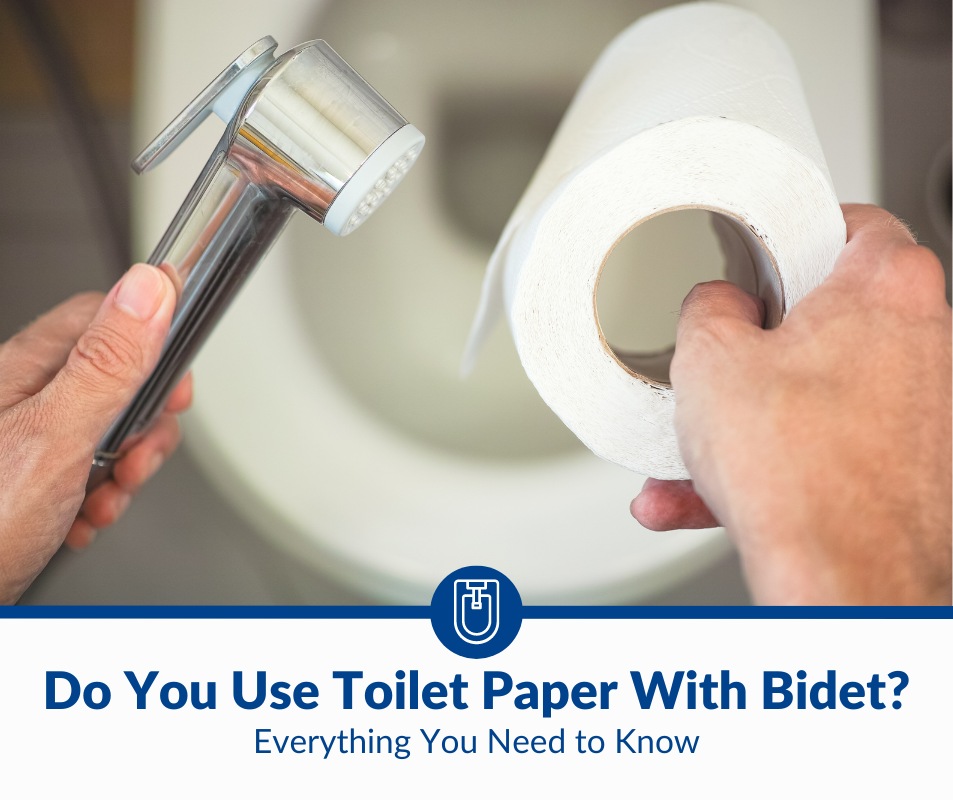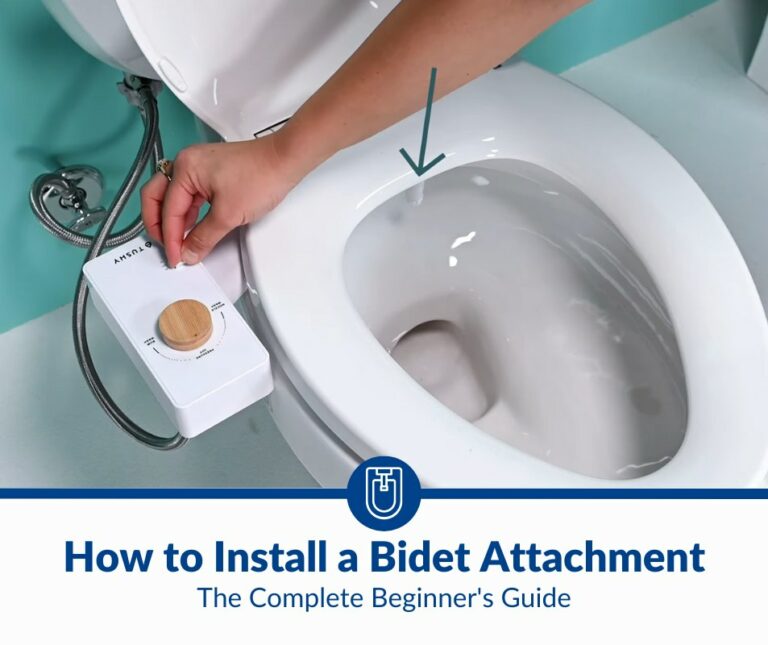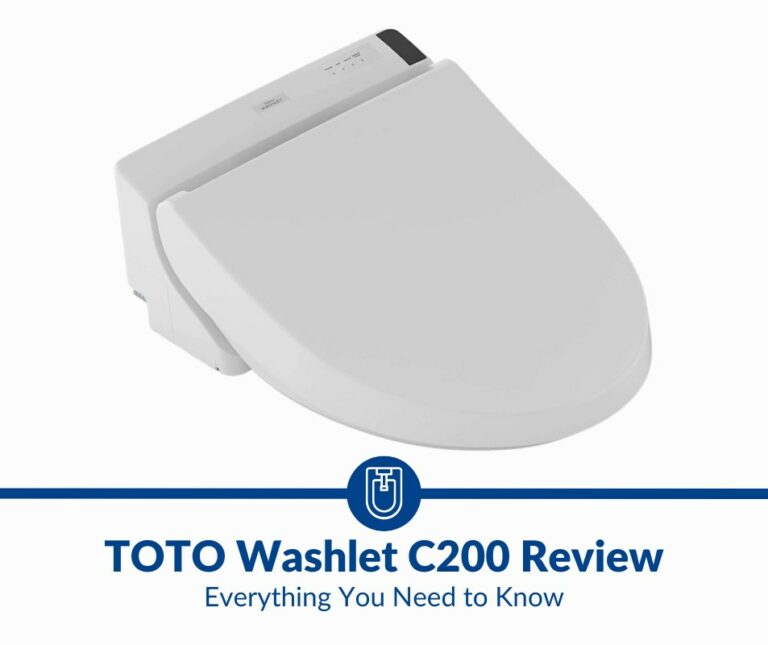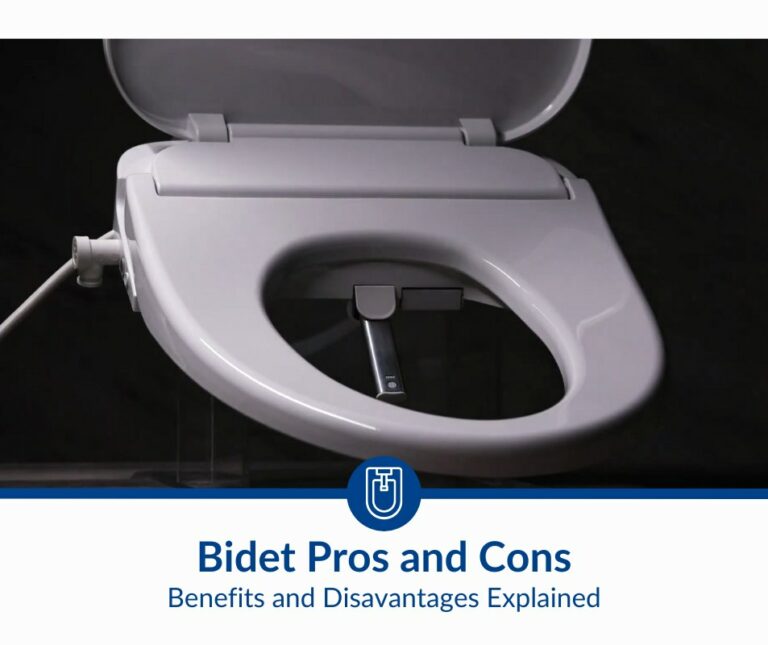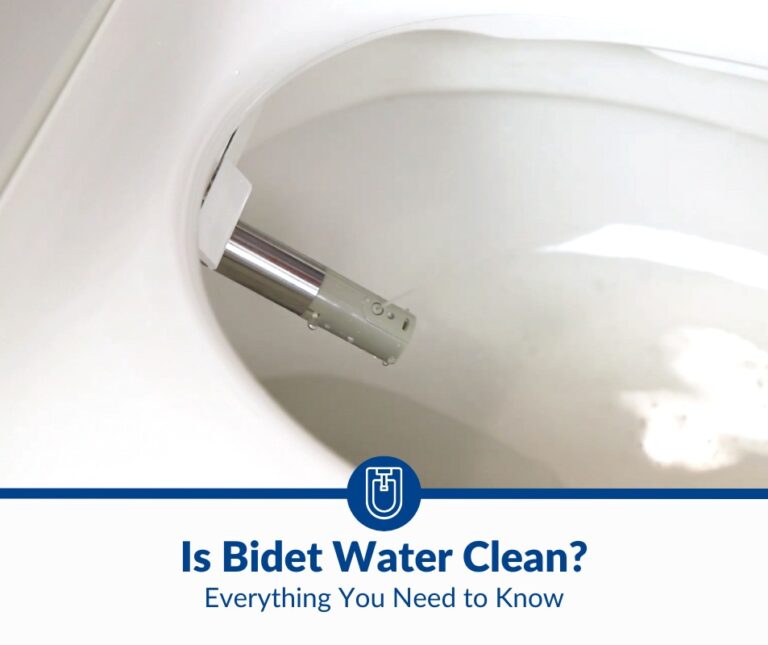Do You Use Toilet Paper With a Bidet?
Using a bidet is a great way to properly clean yourself after using the toilet. It helps you to feel cleaner, and it’s also better for the environment and your wallet because it prevents you from having to buy lots of toilet paper rolls. But should you still use toilet paper with a bidet?
You don’t use toilet paper with a bidet. The water will have done the job of cleaning you. However, you can still use toilet paper to dry yourself after using the bidet. Additionally, the type of bidet you have will determine if you need to use toilet paper, as some bidets have dryers.
In this article, I’ll explore why you don’t really need to use toilet paper after using a bidet, as well as feature some tips and tricks to help you properly use a bidet. I’ll also go over the different types of bidets and how to use them. Let’s get started.
How To Properly Use a Bidet
Not all bidets are made the same. While the way you use the bidet is practically the same, given a few minor differences in positioning, the way they work is different — especially when it comes to drying.
There are three main types of bidets that you should know about, as well as how to use them. Before determining if you need toilet paper after using a bidet, it’s important to understand the different types of bidets and how they work.
The three types of bidets are:
- Standalone bidet. This type of bidet looks like a low washbasin. It’s a separate fixture that’s placed next to the toilet, and you have to stand over it to use it.
- Built-in bidet. Some toilets are designed with built-in bidets secured onto the toilet seat. They’re convenient to use because they can be used when you’re sitting down.
- Handheld bidet. This is a nozzle that’s attached to the toilet. You hold it and use it to spray yourself clean with water.
How To Use a Standalone Bidet
A standalone bidet is made out of ceramic. It looks just like a toilet, just without a reservoir or lid. These bidets require you to stand over them. When doing so, you can either face its water controls or turn away from them. However, I recommend facing the controls, as it makes it much easier to control the water’s temperature and pressure.
With a standalone bidet, you use the water controls to direct the spray of water where you want it to go. However, after using this bidet, you’ll have to dry yourself with toilet paper because this type of bidet doesn’t have an air dryer.
Leaving yourself to air dry naturally can take time, which isn’t practical or healthy as it can lead to skin irritation and become a breeding ground for germs and bacteria. This is why you should try to use toilet paper with a standalone bidet.
How To Use a Built-In Bidet
A built-in bidet is attached to the toilet and usually has a control panel you can use to clean yourself immediately after a bowel movement. To use it, check the toilet for a “wash” button that’s usually on the wall close to the toilet or on the toilet itself. When you press this button, a nozzle will appear underneath you, allowing you to wash quickly with water.
When you’ve finished using the bidet, press the “stop” button. This will cause the nozzle to rinse itself before being retracted back into the toilet seat. Some built-in bidets also have an “air dry” function that helps you to dry yourself after using water from the sprayer.
This is a great feature because it provides a burst of warm air to dry your skin, which is similar to the warm air dryer in bathrooms that are used to dry your hands after using a public toilet.
By using this feature, you can easily dry yourself off without needing to use toilet paper. A bonus of using the bidet’s in-built air dryer is that you won’t have to make contact with your skin, which reduces the risk of transferring bacteria to your hands.
Follow these steps to use the air dryer of your bidet properly:
- Start the air dryer. How you do this will vary depending on the built-in bidet that you own. Some models have a wireless remote control, while others have an “air dry” function on their display.
- Position yourself to get the air where you need it. This might require a bit of trial and error at first until you get used to the bidet.
- Adjust the temperature. The dryers have a heater that you can adjust via a side panel or remote control. Generally, these dryers will reach a heat of between 95° and 140°F (35-60°C).
- Be patient when drying yourself. Drying yourself off with a built-in air dryer can take a minute or two, but it’s worth it because it’ll dry you properly without making you feel that you need to use toilet paper. However, if you’re in a rush, you might want to use toilet paper.
How To Use a Handheld Bidet
A handheld bidet is the easiest type to use because you hold the sprayer while sitting on the toilet. It’s also the most convenient type of bidet, as it’s usually the cheapest and you can easily install it onto your toilet yourself.
This type of bidet is usually attached to the toilet, and it’s similar to how you can use a handheld shower that’s attached to your shower wall. A handheld bidet enables you to direct the stream of water to where you want it to go, so it’s great if you don’t want to have to straddle a bidet or try to position yourself to get the water where you want it to go.
You can also find handheld bidets on the market that are totally portable. Some of these either provide a stream of water or allow you to pulse it to adjust how much water you get, and they’re great for when you’re spending time outside in nature, such as on camping trips. They’re also beneficial to people with mobility issues.
Once you’ve positioned the sprayer so that it directs the water to your skin, you should squeeze its handle to spray the water. You can adjust the water pressure on the sprayer. Ideally, start with low pressure so you get the hang of it before you increase it.
After using a handheld bidet, you’ll have to dry yourself off. If you’re at home, you could use a towel or toilet paper, which will be more hygienic and convenient because you won’t have to wash it before using it again.
General Tips for Cleaning Yourself Properly With a Bidet
Now that you know how to use the different types of bidets and if you need to use toilet paper with each of them, here are some important tips to follow so that you give yourself a good clean that doesn’t necessarily require the use of toilet paper afterward:
- Wash with warm water. Note that some bidets will only have a cold water option, but if there’s a choice, warm water is better as it’s more soothing and more comfortable to use.
- Adjust the water slowly. Some bidet jets can produce a powerful stream of water that can splash all over the bathroom. When using a handheld bidet sprayer, direct it away from you to test the water pressure.
- Position yourself over the water. This will ensure that you clean yourself properly. If you don’t have an air dryer feature on your bidet, you will have to dab the area with a sheet of toilet paper, but you’ll use a lot less if you’re clean!
- Fill your traditional bidet. If the bidet you’re using doesn’t have water jets, you’ll have to wait for the faucet to fill the bidet and then use your hands to clean yourself. This will require more effort on your part, but again, it’s important to clean yourself thoroughly so that drying yourself won’t require you to clean yourself again.
- Use the bidet until you feel clean. This should take about a minute or so, but you might have to take a bit longer. It will probably take less to use water jets on an electric bidet.
- Consider toilet paper. This is a matter of preference and practicality. If the bidet contains jets that give you a thorough clean and don’t require you to use your hands, you might feel more comfortable not using it. If you have to use your hands, toilet paper can help you to wipe yourself.
- Wipe gently. If you’re using toilet paper to dry yourself after using a bidet, you don’t have to wipe multiple times or aggressively because you’ve already cleaned the area. Simply dab your skin with the toilet paper to remove any water that’s present.
- Be careful when using bidets in public. Don’t use any towels hanging close to the bidet to dry yourself. This is reserved for drying your hands and can easily spread germs and bacteria around.
- Always rinse the bidet afterward. Once you’ve cleaned and dried yourself properly, you should always rinse the bidet. This ensures it will be clean and ready for the next person to use. To do this, run the water at a low pressure to rinse the bidet. But don’t forget to turn the jets off so that you don’t waste water!
Reasons Why You Should Use Toilet Paper With a Bidet
If you’re using a bidet for the first time, you might feel that you’re not completely clean, which can lead to you wanting to use toilet paper. There are many good reasons why you should choose to use toilet paper to dry yourself after using a bidet, which I’ll go over in the following sections.
Using Toilet Paper Ensures You Cleaned Yourself Properly
Toilet paper is the final stage of ensuring that you’ve cleaned and dried yourself properly. After using toilet paper, you’ll likely feel more comfortable, especially if you’re using a bidet for the first time.
However, how you use the bidet determines how much toilet paper you need. Check the bidet’s nozzle position the next time you use it, as this will ensure that you’re getting enough water to the area where you need it. If you’re not, you won’t be able to clean yourself, which will cause you to use more toilet paper.
Using Toilet Paper Allows You To Feel Dry Quicker
Even if your bidet has an air dryer function installed, sometimes this can take a bit of time for you to feel that you’ve dried yourself properly. So, it can be a good option to use toilet paper. If you’re worried about the environment, there are sustainable toilet paper options you can consider.
I recommend Caboo Bamboo Toilet Paper, which is available from Amazon. It’s biodegradable and made from bamboo, so it’s safe for septic tanks while also being safe for people with sensitive skin. It’s also free of BPA and fragrances that are harmful to your skin and the environment.
Reasons Why a Bidet Is Better for You Than Toilet Paper
Although you might want to wipe with toilet paper after a bowel movement before using a bidet, as this is a matter of preference and depends on the situation, there are many reasons why using a bidet is preferable to using toilet paper alone.
So, now that we’ve looked at some advantages of using toilet paper after washing with a bidet, it’s good to see what their potential drawbacks are:
- Bidets prevent over-wiping. If you use lots of toilet paper, you’re just smearing the fecal bacteria on your skin instead of giving yourself a good clean. This can spread germs and put you at risk of infections. Plus, it causes a lot of toilet paper to be used!
- Bidets prevent contact with bacteria. Bidets remove dirt residue and bacteria without you having to use your hands, so you don’t come into contact with bacteria. However, even if you haven’t made any contact with your skin, you still need to wash your hands!
- Bidets prevent damage to the skin. The skin around the anus is thin and delicate, which makes it susceptible to scratches and anal fissures from using toilet paper aggressively. The same thing can happen if you’re drying yourself with a bidet towel.
- Bidets are gentler on your skin. If you have a health condition, such as an anal fissure, you’ll want to avoid wiping your skin with rough toilet paper. This is why a blast of soothing warm air to the area can help you to dry off in a gentler way.
- Bidets are more convenient. If you’re using a bidet at someone’s home or in public, you want to make use of its air dryer function as this will be more convenient and practical to use. You won’t have to use a lot of toilet paper (as long as you wash properly) or use a towel which is very unhygienic. Hands-free use is best in this case!
- Bidets save you money. Bidets can be good for your wallet as compared to purchasing toilet paper. The average American family uses around 409 toilet rolls per year, as Today reports. Bidets can save you money because even if you do use toilet paper, you’ll use less because it’s more effective to clean yourself with water.
- They’re better for the planet. Toilet paper brands contribute to global warming by destroying forests that draw carbon from the atmosphere. Toilet paper also releases carbon every time it’s flushed.
The Importance of Position When Drying Yourself
Whether you’re washing with a bidet or drying yourself after using it, you need to position yourself properly so that you get the proper cleaning and drying off. This will take a bit of trial and error as you’ll have to test out different positions to ensure that you direct the water or air to where you want it to go.
Since air dryers can take a few minutes to fully dry you, it doesn’t help that they’re usually not positioned right in the middle of the cleaning nozzle. So, it can be useful to reposition yourself by leaning forward so that you dry yourself better and faster. This will save you time and make you feel clean and dry without having to use toilet paper.
Final Thoughts
If you want to buy a bidet, you might want to know if you should use toilet paper or if you can rely on the water from the bidet to clean yourself thoroughly. While this is a matter of preference, using toilet paper does come in handy in certain situations, so it’s always good to reach for a roll in these circumstances:
- If you don’t feel completely dry after using a bidet.
- If you haven’t got the hang of using a bidet’s air-dry function.
- If you feel that wiping with toilet paper gives you a more thorough clean.

